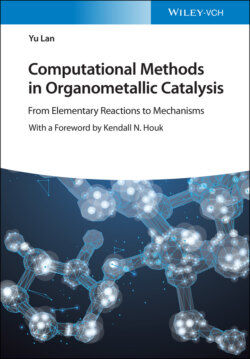Читать книгу Computational Methods in Organometallic Catalysis - Yu Lan - Страница 9
Foreword
ОглавлениеComputational chemistry began in the 1940s with the earliest electronic computers and drastic approximations to the Schrödinger equation, such as Hückel molecular orbital theory. Since the 1960s, the possibilities of doing quantum mechanics calculations on large systems containing metals, indeed to study the heart of organometallic chemistry, began with the Mulliken–Wolfsberg–Helmholtz approach and then Roald Hoffmann's Extended Hückel Theory (EHT) in the 1950s and 1960s. While an amazingly useful method, EHT is really only of qualitative value. But actually what we need is a conceptual framework that is useful even today.
The 1960s saw remarkable advances in methods, approximations, and the beginnings of the flowering of computers for chemical calculations. The dawn of the modern hybrid density functional theory in the mid‐1990s, borrowing exact exchange from wavefunction theory, made it possible to begin the quantitative calculations of structure, mechanics, and mechanisms, including the incredibly useful organometallic reactions. Both Ru and Mo catalysts for olefin metathesis, and Pd catalysis for cross‐coupling reactions, have led to Nobel prizes for their discoverers.
Yu Lan has now written an introduction, a guide, a masterwork about quantum mechanical studies of organometallic reaction mechanisms. He is ideally equipped to write such a book, already doing outstanding work in the field as a student and postdoc, and becoming a leader in the field in his independent career. He has also trained many young experts in the field, and his influence will spread further from their achievements and through this book.
The book includes a historical introduction to organometallic chemistry, a survey of mechanisms, and an extensive introduction to quantum mechanical computational methods, especially density functional theory, as well as programs for quantum chemical calculations.
The description of organometallic structures and mechanisms is peppered with numerous calculations from the Lan group with relatively accurate density functionals. Part 2, the bulk of this book, is organized with a chapter for each of the most important metals used in organometallic chemistry: Ni, Pd, Pt, Co, Rh, Ir, Fe, Ru, Mn, Cu, Ag, and Au. The computational studies of the reactions of complexes of each of these metals are reviewed with great insights into mechanisms using computations.
The book will be a boon to organometallic chemists and computational chemists involved in the study of organometallic reactions. While a number of books on organometallic chemistry mechanisms are available, this is THE book describing the methods for computation and analysis of organometallic reactions using modern quantum mechanical methods.
29 August 2020
Kendall N. Houk
